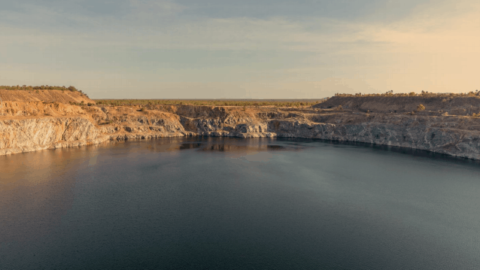By Marnie Shaw, William Ertler and Louise Bardwell, Australian National University and Baran Yildiz, University of New South Wales
Developing more sustainable and energy efficient ways to store and use energy does not always have to require fancy or complex technologies. A recent collaboration from the Australian National University and a regional Victorian town has had surprising and positive results in proving that moving electric hot water heating from nighttime to during solar hours has the potential to massively reduce required battery storage.
Australia has the highest per capita installed capacity of rooftop solar photovoltaics (PV) in the world. However, the majority of this energy is generated when many residents are at work with minimal household electricity demand and not available during times of peak electricity demand, such as in the evening when residents return home.
To ensure Australia’s rooftop solar capacity is used optimally, households and energy market stakeholders must leverage new strategies and technologies to help fix this mismatch between solar generation and household electricity use. One of the most common and effective of these technologies is battery energy storage.
Batteries enable houses to store excess solar generation locally to be discharged during peak periods, potentially reducing network congestion, lowering electricity bills and reducing emissions.
Community groups powering their regions
Many towns around Australia are uniting to take ownership of the energy transition and to make change on a local scale. Located in north-east Victoria, the town of Yea has a small population of around 1,600 people. Its community group, 2030Yea has a big goal of powering its local area with 100 per cent renewable energy by 2030.
In determining the best pathway to achieve Yea’s goal, the group commissioned a report by our team of ANU academics and researchers to investigate the feasibility of a community battery in Yea. Community batteries are medium-scale batteries (0.1 to 5MW) situated in the low voltage distribution network that are owned, operated and/or governed by a community for community benefits, such as supporting the integration of rooftop solar.
Eye-opening results
An unexpected finding in our work was that the peak electricity demand in Yea does not occur in the evening, as we typically see in our metropolitan cities. Rather, peak demand occurs around 1am and is due to electric off-peak hot water heating (Figure 1). The effect of the old off-peak tariff period from 11pm to 7am can be seen through the spikes in load at 11pm, the early morning hot water heating peak, and the load dip at 7am from when appliances were set to switch off.

Figure 1. 15-minute average daily load in Yea for 2018 with a standard error of mean. Data was provided to ANU by 2030Yea and AusNet.
It turns out that this is the case for many regional towns in Australia that have never been on the reticulated gas network. We therefore estimated that moving hot water heating to the middle of the day could effectively soak up Yea’s excess solar generation and that this change would have a significant impact on the size of the battery storage that would be needed in Yea.
Indeed, through our modelling, we found that if the town’s hot water heating was shifted to peak solar hours, the total battery storage required to achieve 100 per cent renewables could be reduced by up to 80 per cent under ideal conditions1.
By reducing the required battery capacity, this shift could also reduce the embedded emissions associated with the battery’s material parts and production and end-of-life, as well as concerns around the availability of critical minerals like lithium.
In determining the viability of this option, it was also very important to ensure that households would not be worse off financially by shifting their hot water heating time. This was, after all, the main reason hot water timers were originally set to the off-peak time of around 1am.
In our modelling, we found that, under new tariffs in Victoria which have off-peak prices for solar hours, households were also, on average, better off financially if they shifted their hot water heating to solar hours.
Forward-thinking
For the township of Yea in Victoria, our modelling clearly suggested that it would be worthwhile for town residents to shift their electric hot water heating to solar hours to soak up their abundant rooftop solar power generation and to minimise the total amount of battery storage required to achieve 100 per cent renewable energy in their town.
Our work with 2030Yea also highlights how not all solutions to achieving 100 per cent renewable energy require fancy technologies, and that a lot can be achieved through clever shifts in how we think about and use our energy. This adaptive thinking will be important in ensuring that our future energy systems are sustainable and not unnecessarily resource intensive.
William Ertler, who led the research, was previously an ANU Engineering student and is now a graduate renewable energy engineer at Jacobs. Mr Ertler was supervised by Associate Professor Marnie Shaw from the ANU Battery Storage and Grid Integration Program. Louise Bardwell works as a Research Assistant at the ANU Battery Storage and Grid Integration Program. Baran Yildiz is a Senior Research Associate at UNSW and is currently involved in an ARENA project2, looking at dynamically managing hot water systems in South Australia.

















